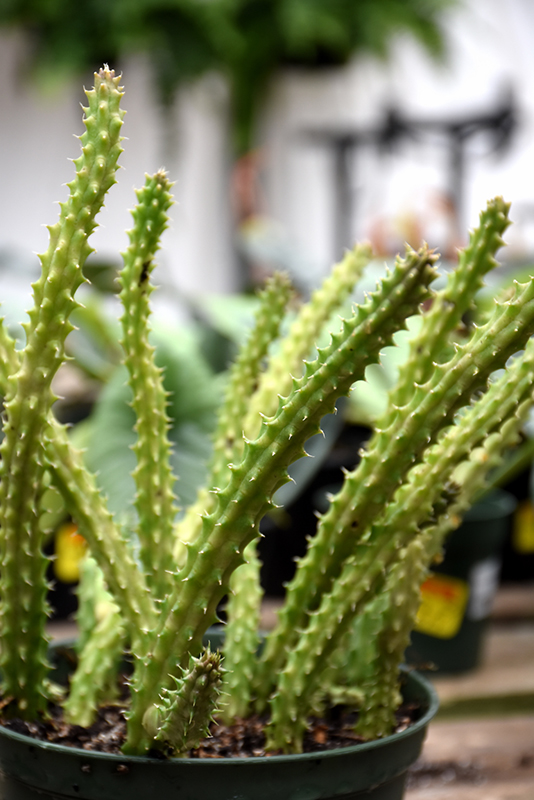Height: 8 inches
Spread: 24 inches
Sunlight:
![]()
![]()
Other Names: Maroon Cup Flower, Rugose Cup Starfish Flower
Description:
A clump forming succulent with erect, pubescent green stems that resembles a small cactus, but it is not in the cactus family; burgundy cup flowers are beautiful, but not desired when grown as a houseplant because of their terrible smell
Features & Attributes
Black Bells is is a highly distinctive and unusual plant. Although it actually isn't technically a cactus, it is still a succulent evergreen which behaves much like a cactus. It is characterized by the highly modified and distinctive spiny ribbed green stems that comprise the bulk of the plant, and which are designed to retain water for extended periods of time. It leaves remain green in color throughout the year.
This is an herbaceous evergreen houseplant with a mounded form. This plant may benefit from an occasional pruning to look its best.
Planting & Growing
When grown indoors, Black Bells can be expected to grow to be about 8 inches tall at maturity, with a spread of 24 inches. It grows at a slow rate, and under ideal conditions can be expected to live for approximately 10 years. This houseplant will do well in a location that gets either direct or indirect sunlight, although it will usually require a more brightly-lit environment than what artificial indoor lighting alone can provide. It prefers dry to average moisture levels with very well-drained soil, and may die if left in standing water for any length of time. This plant should be watered when the surface of the soil gets dry, and will need watering approximately once each week. Be aware that your particular watering schedule may vary depending on its location in the room, the pot size, plant size and other conditions; if in doubt, ask one of our experts in the store for advice. It will benefit from a regular feeding with a general-purpose fertilizer with every second or third watering. It is not particular as to soil pH, but grows best in poor soil. Contact the store for specific recommendations on pre-mixed potting soil for this plant. Be warned that parts of this plant are known to be toxic to humans and animals, so special care should be exercised if growing it around children and pets.
There are many factors that will affect the ultimate height, spread and overall performance of a plant when grown indoors; among them, the size of the pot it's growing in, the amount of light it receives, watering frequency, the pruning regimen and repotting schedule. Use the information described here as a guideline only; individual performance can and will vary. Please contact the store to speak with one of our experts if you are interested in further details concerning recommendations on pot size, watering, pruning, repotting, etc.
-- THIS IS A HOUSEPLANT AND IS NOT MEANT TO SURVIVE THE WINTER OUTDOORS IN OUR CLIMATE --
